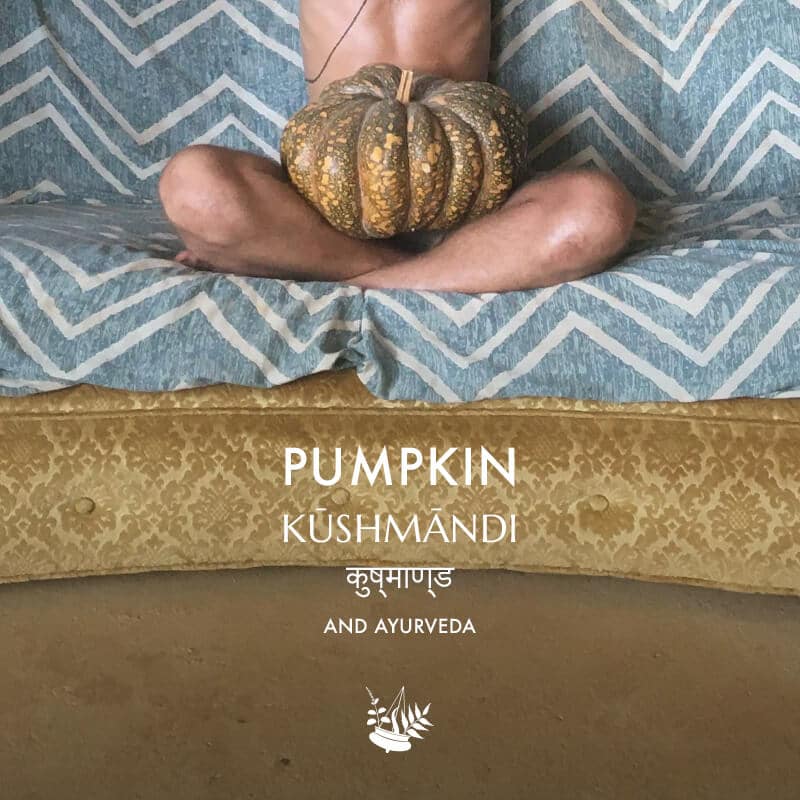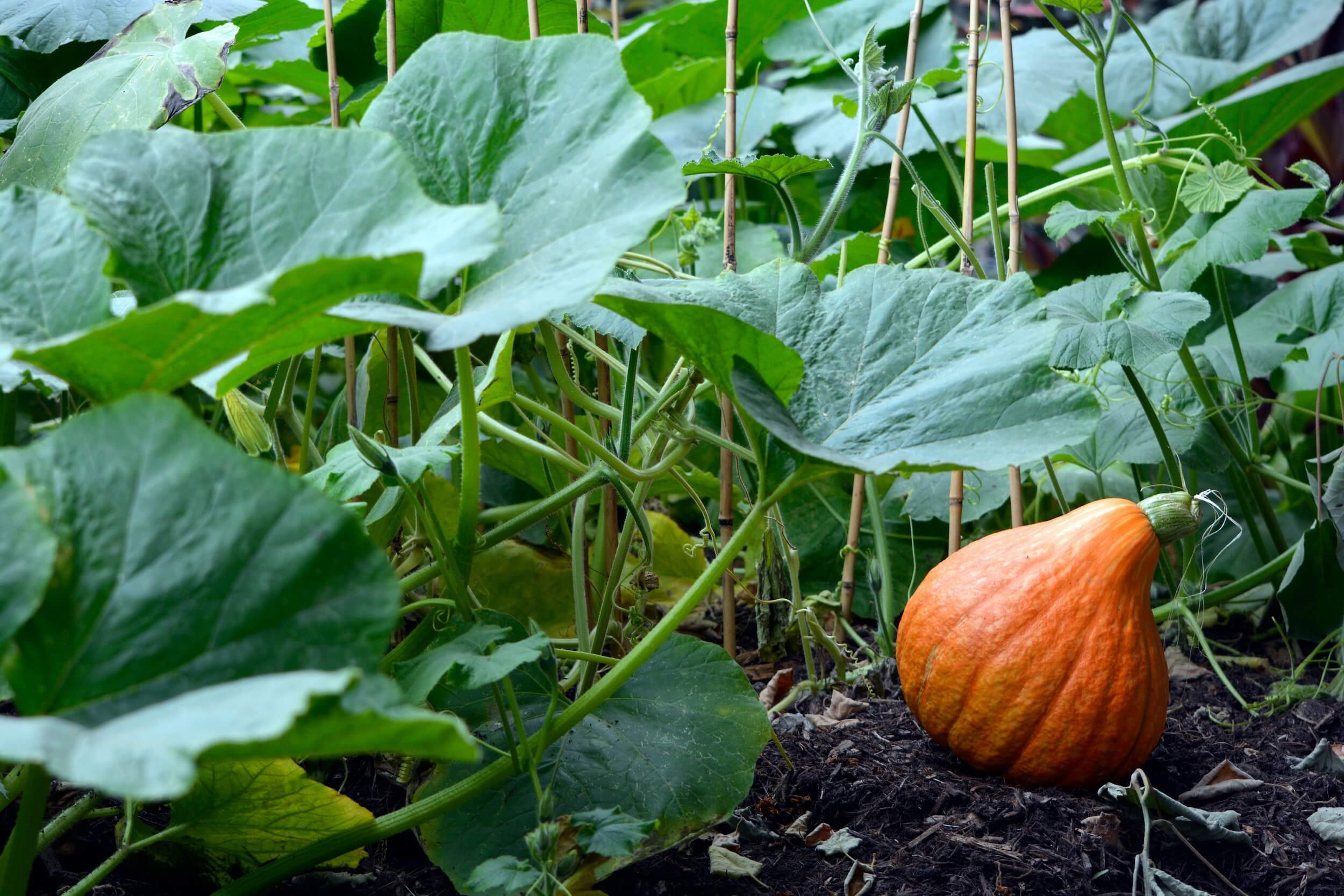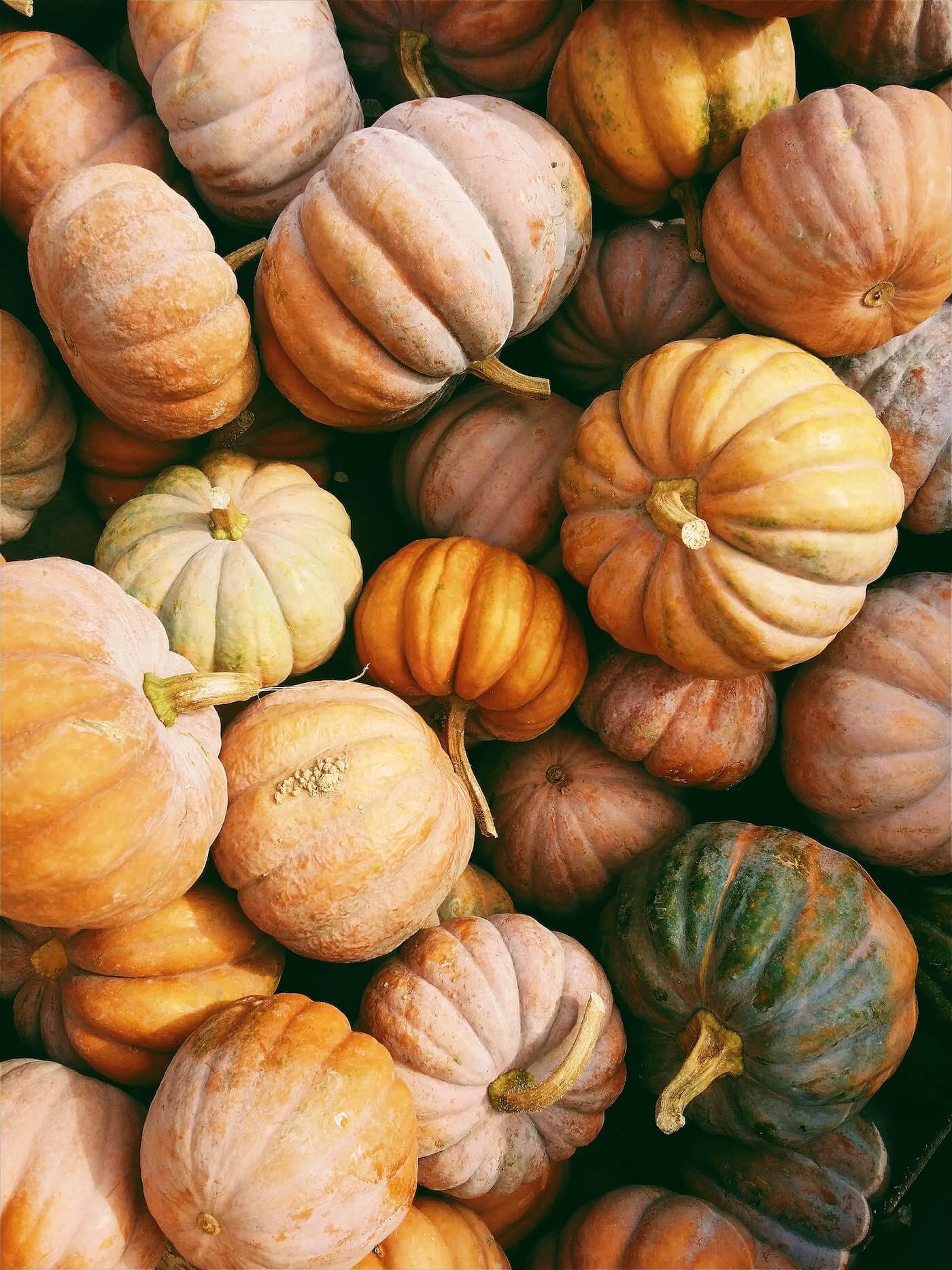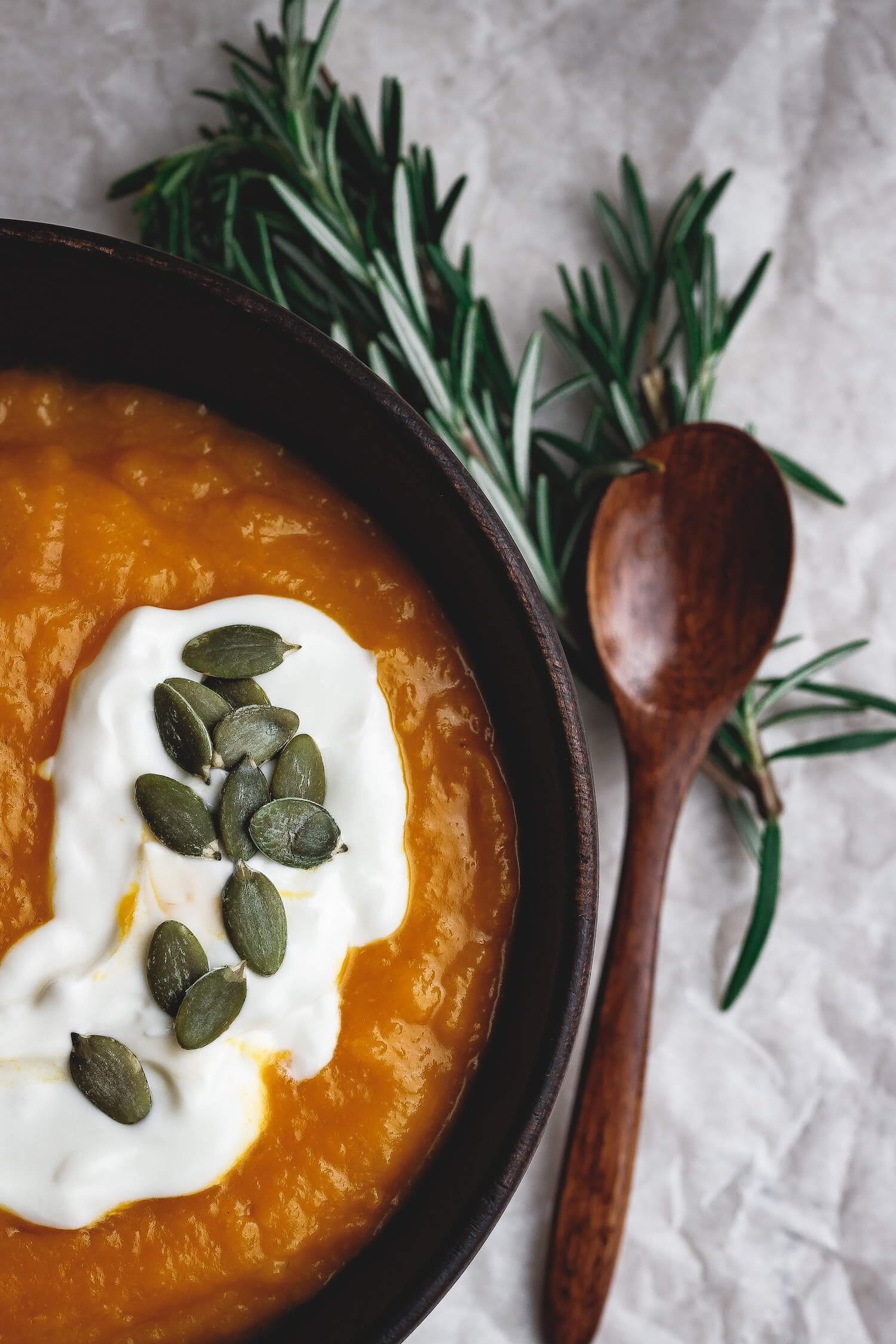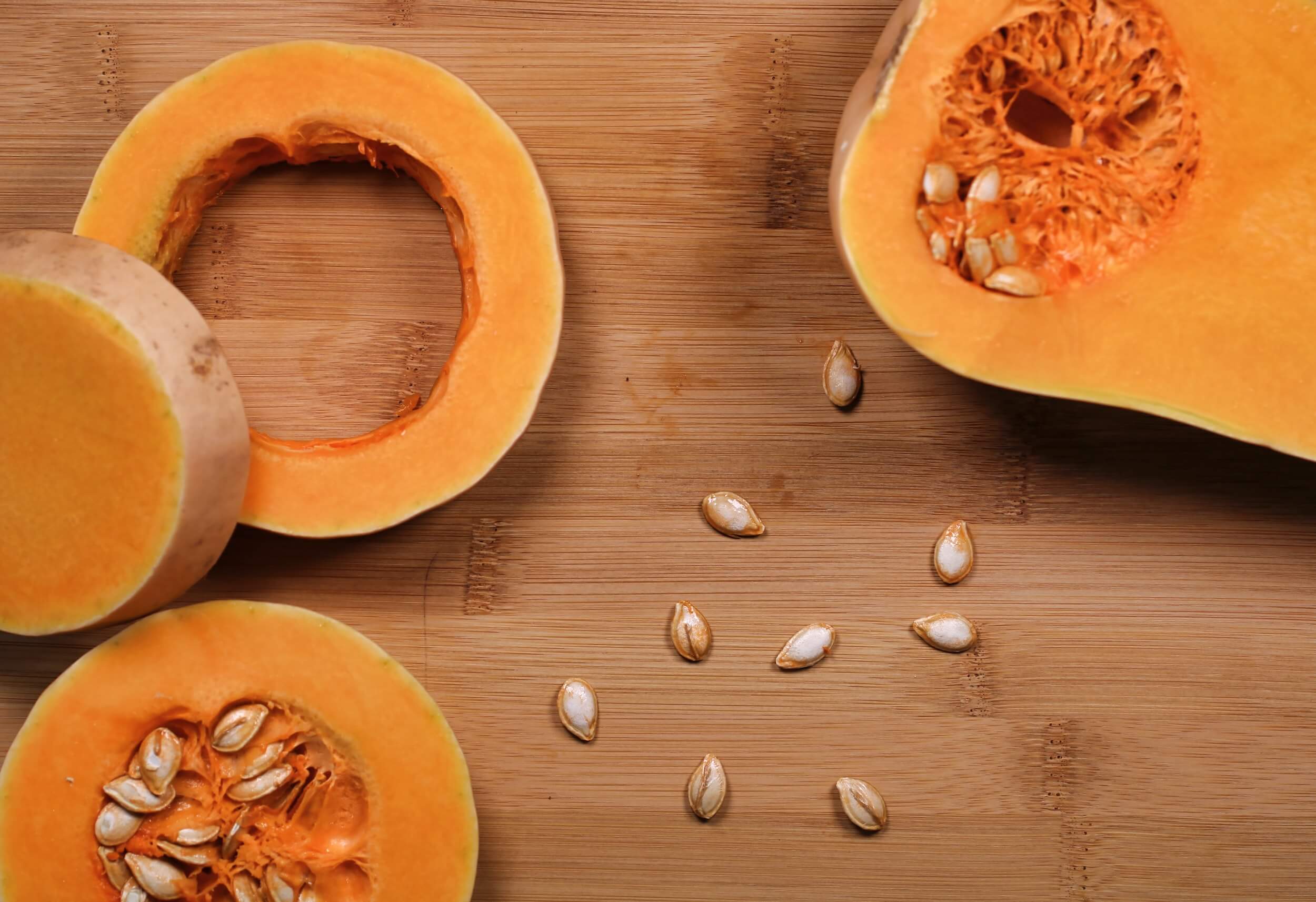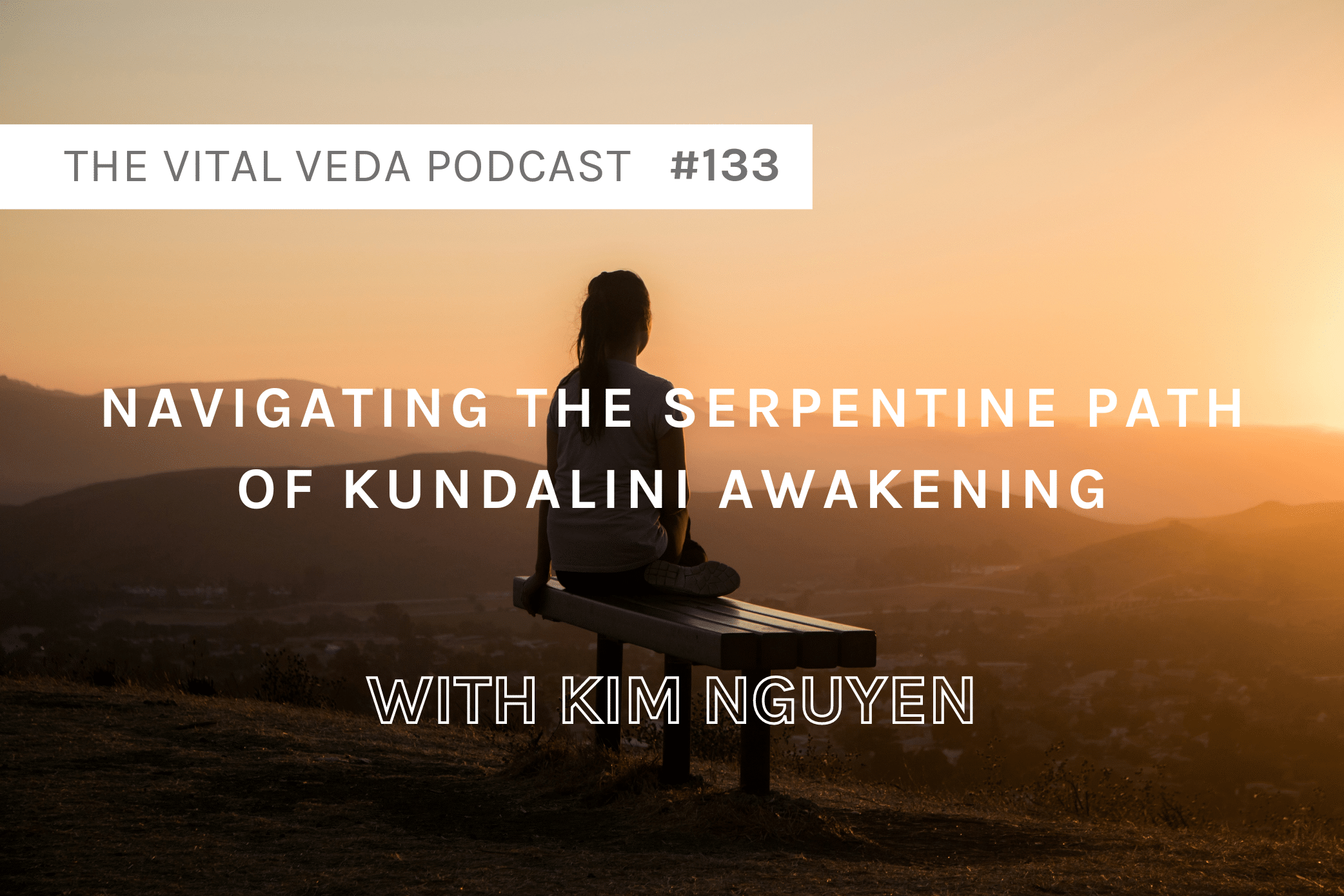We feel well grounded and nourished from a hot pumpkin soup.
The sweet soft sludge gracefully travels down our oesophagus to nourish our nervous system that is ever so prevalent in our gut, while the bright orange phytonutrient slush delivers antioxidants and microbial balancing effects to our digestion and it’s inhabitants (the microbiome).
Pumpkin (Cucurbita pepo and it’s close relatives) when cooked has a sweet taste, sweet post-digestive effect and slightly heavy quality, which can balance Vata (bio-energy associated with movement) and ground the nervous system.
Ayurvedic Properties
Rasa (taste) – madhura (sweet taste)
Virya (energy) – sheeta (cooling)
Vipaka (post-digestive effect) – madhura
Gunas – guru (heavy), ruksa (dry)
But beware, pumpkin is also drying so it can aggravate vata if you do not use spices (e.g. cumin, tamarind, pepper) and ghee (or a good quality oil).
Pumpkin also tends to cause constipation (vishtambhi) and contribute to rheumatoid arthritis (ama vat). I recommend to minimise pumpkin when Vata is out of balance.
It is also important to add spices and consume minimally for kapha (bio-energy associated with coherence, structure and stability), as pumpkin can be a little tamasic (dulling), create heaviness and ama (sticky toxic material).
Pumpkin is Actually a Fruit
Pumpkin (Kūshmāndi or Karkāru in Ayurveda) is actually a fruit according to Ayurveda and modern botany. This is because it’s a product of the seed-bearing structure of flowering plants.
This is also why there are some disputes about the actions of pumpkin in Ayurveda, because it’s therapeutic properties change whether it is raw or cooked and what part of the plant is used – fruit, flower, seeds, sap, stem or leaves (whole pumpkin plant is used medicinally). Also, the fact that there are many varieties of pumpkin makes it more challenging to agree on it’s properties.
The Auspiciousness of Pumpkin
Pumpkin in Ayurveda is considered auspicious. It is one of the fruits offered during ceremony (puja) to activate specific divine forces of consciousness.
The pumpkin fruit is used to remove subtle negative influences called “dristi dosha.” This is why you’ll find pumpkins hanging from the ceilings of doorway entrances in India, to keep the subtle negative energies out of the house. If the pumpkin goes rotten unusually quickly, it is doing its job of absorbing these doshas. It is then replaced with a new demon protecting fruit for the next security shift.
Other Health Benefits of Pumpkin
Other benefits of the cooling fruit is the presence the phytonutrient carotene, which converts to vitamin A in the body for a tremendous punch of antioxidants (molecules that inhibit the damaging effects of free radicals).
This also provides the capacity to help reduce the risk of heart disease and cancer, as well slowing down the signs of ageing, such as the formation of wrinkles.
It helps cure bleeding diseases.
It causes moistness and discharges from the channels (Syandi). (This is not always good).
It can help with tape and intestinal worms (krimi).
Skin Health — Health.com says carotenoids in pumpkins contain wrinkle-fighting pigments, which help hydrate and zap free radicals in your skin and help prevent them from causing damage. The vitamins as well as powerful enzymes help clean your skin.
Pumpkin Seeds
A special bonus in pumpkin seeds is the amino acid tryptophan, which, once in the brain, converts into serotonin, a nutrient that helps regulate brain function.
The seeds contain a concentrated source of minerals and vitamins, with 30 grams of protein, 8.82 milligrams of iron and 559 calories in every 100-gram serving, but no cholesterol.
The dietary fibre helps maintain regular waste elimination and helps keep the colon safe from diseases.
Have essential fatty acids that have been shown to support good prostate health and should be a health pitta-reducing and prostate pleasing diet.
The seeds are high in iron. They also contain good amounts of zinc and magnesium.
How to Eat Pumpkin
The older the better, leave them on the vine for as long as possible, wait for the pumpkin to harden. Use spices and don’t eat too much.
If you can get white pumpkins (such as Ash Gourd) these are much better medicinally and they don’t aggravate the conditions mentioned earlier.
References:
mercola.com and hyperlinked is scientific references.

